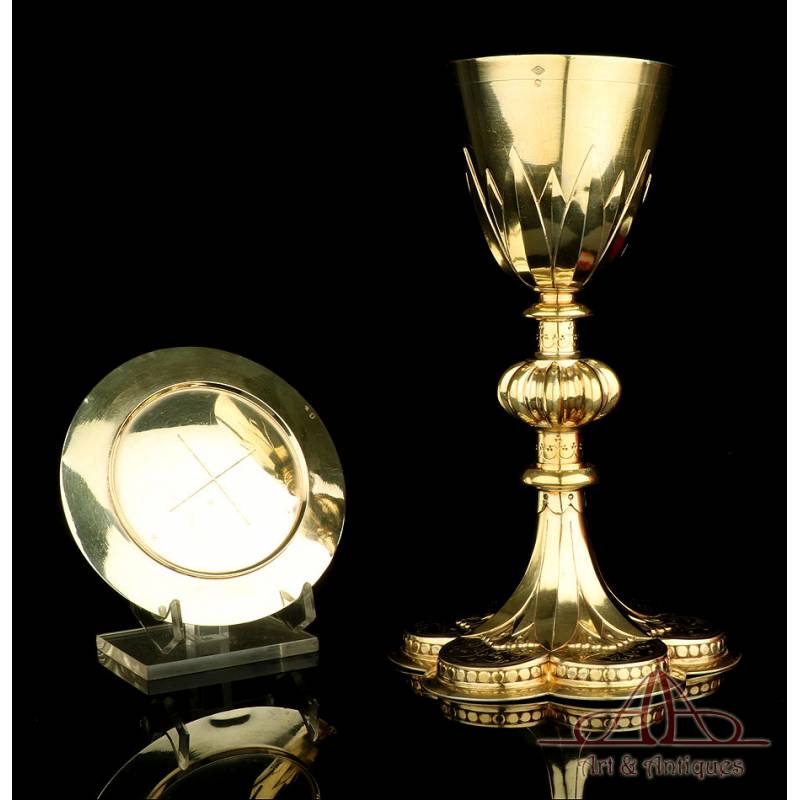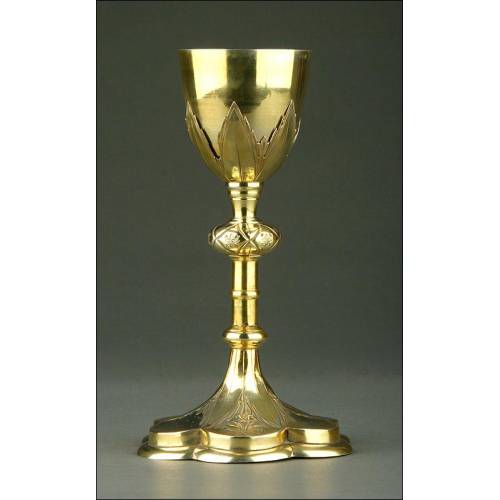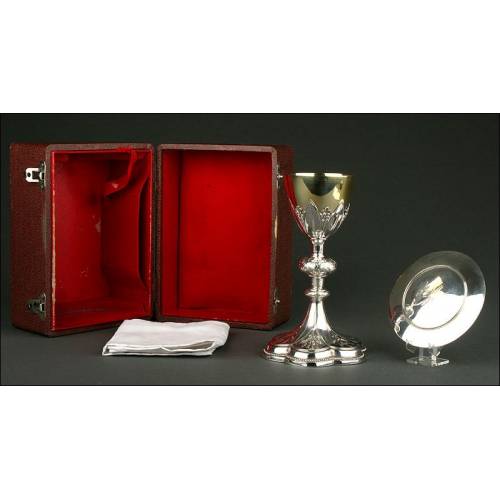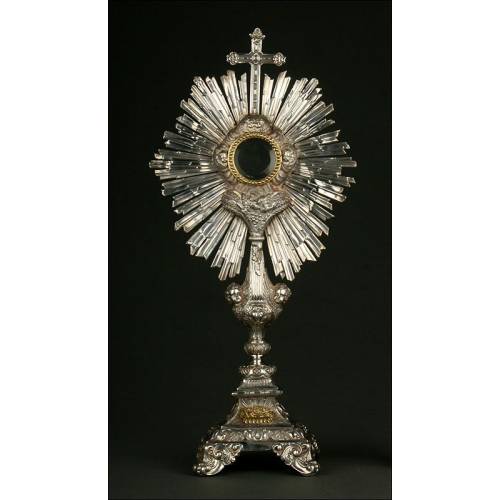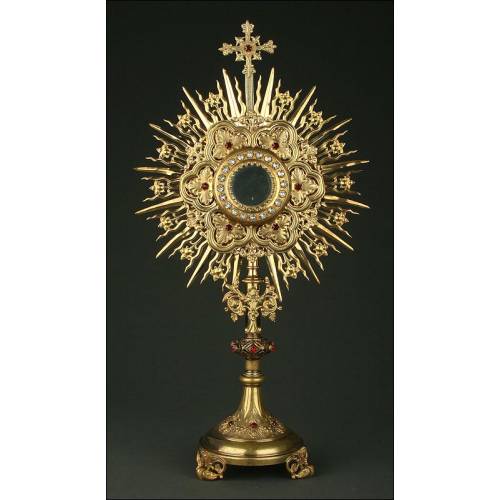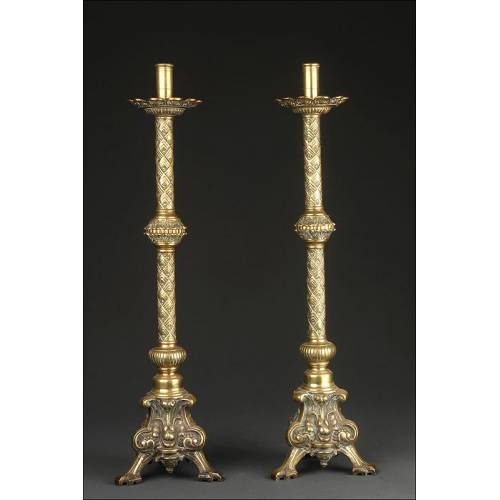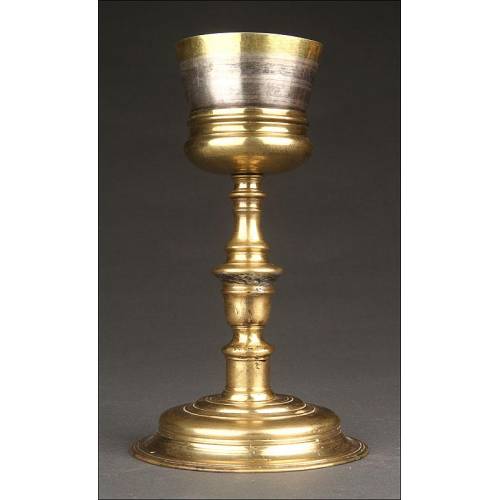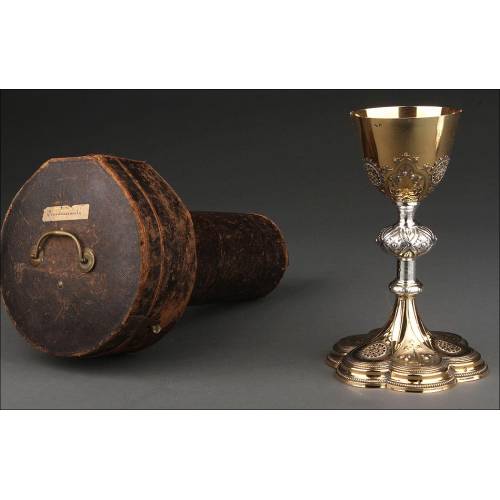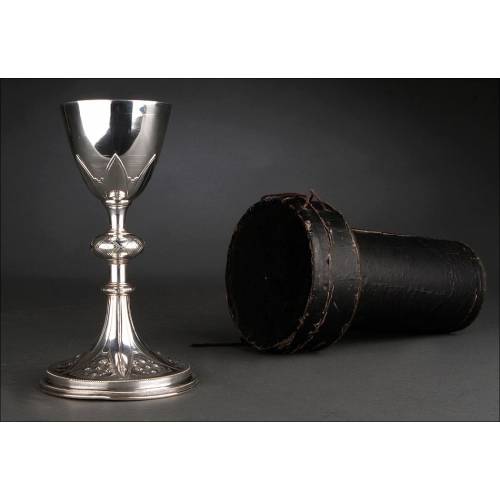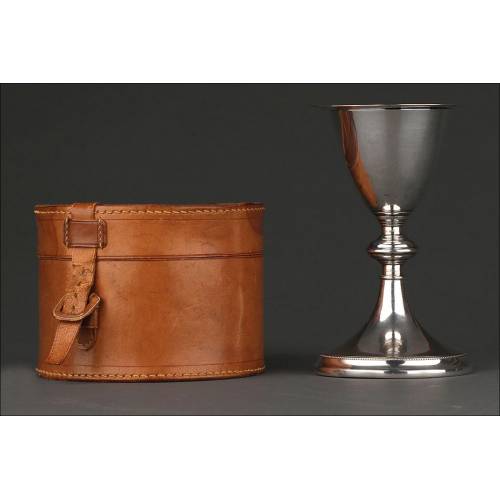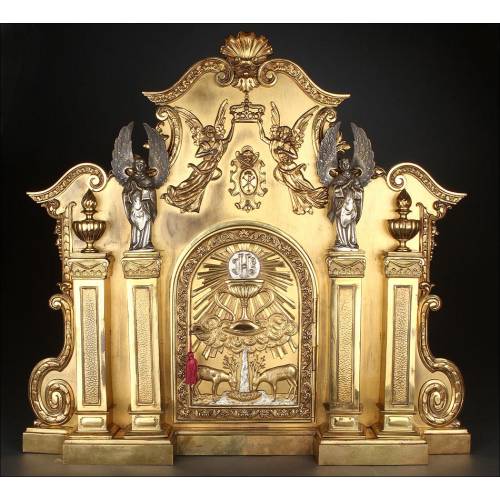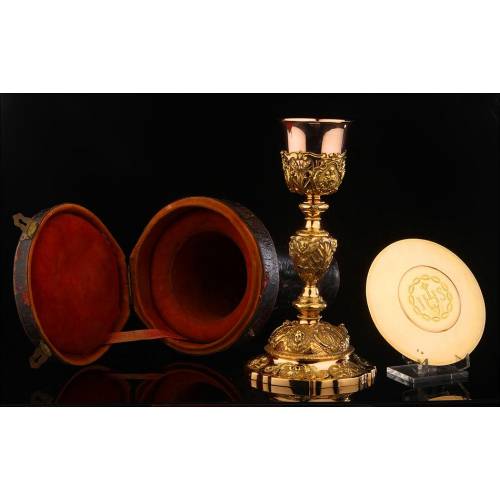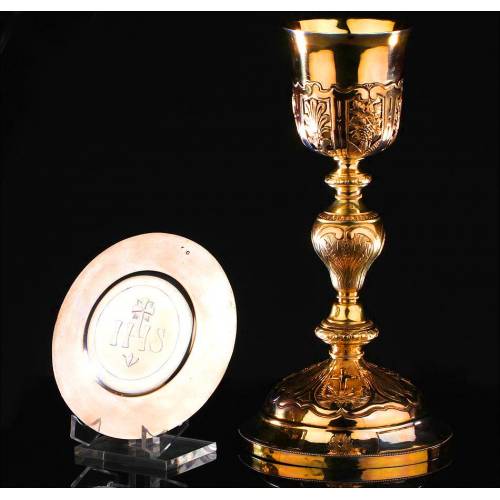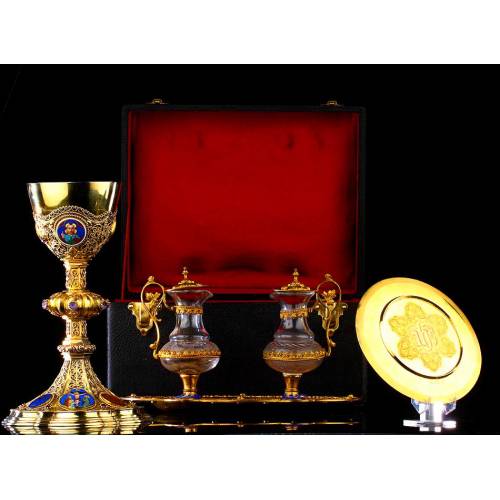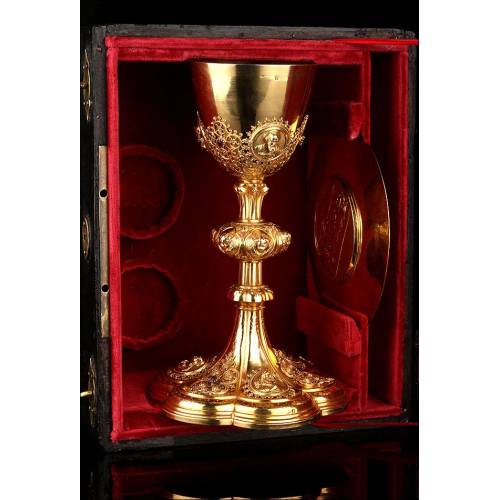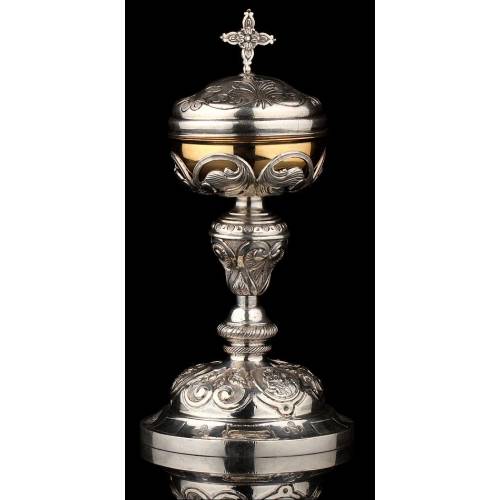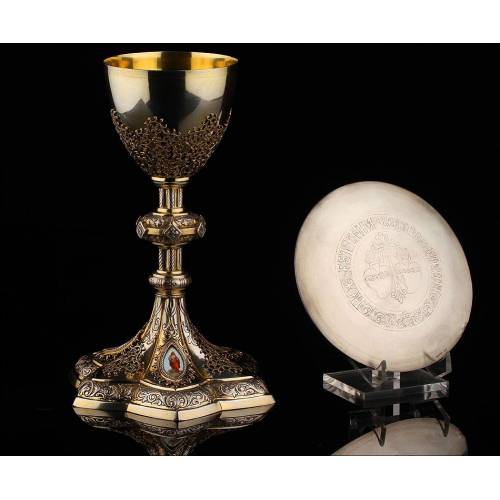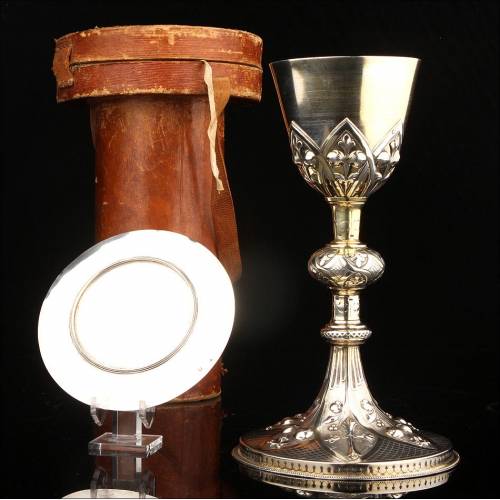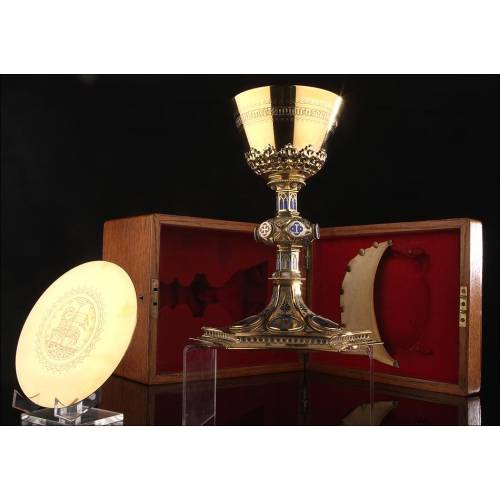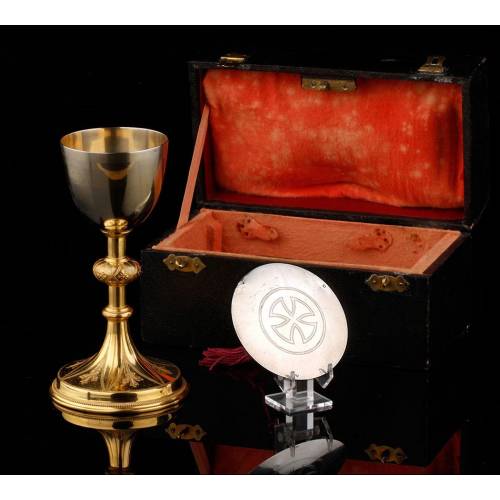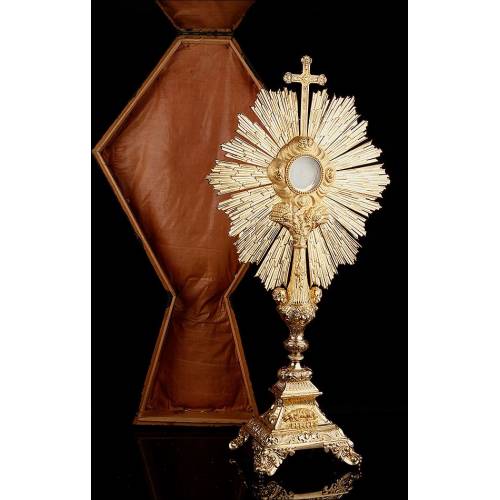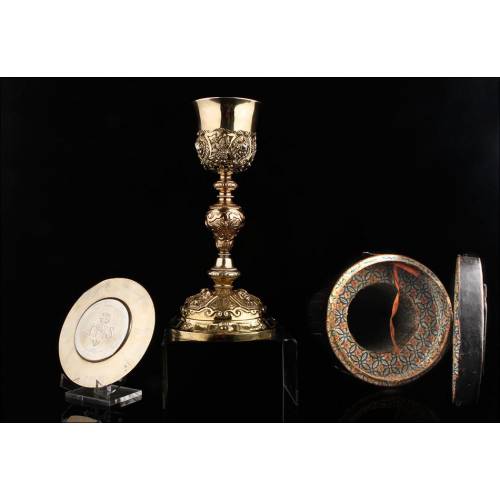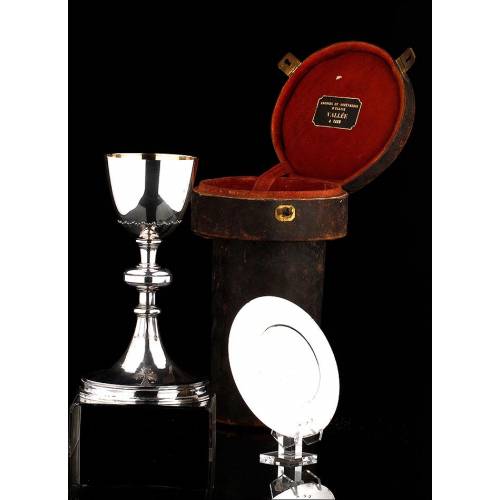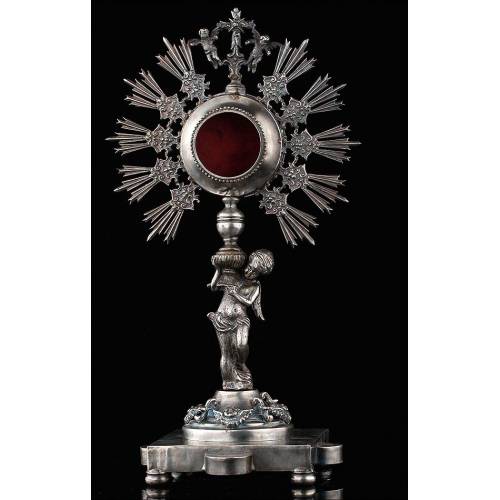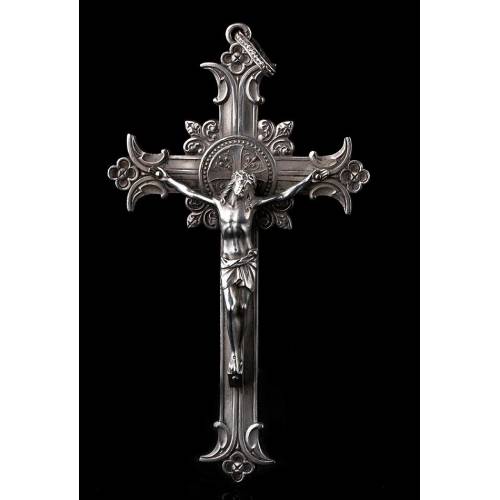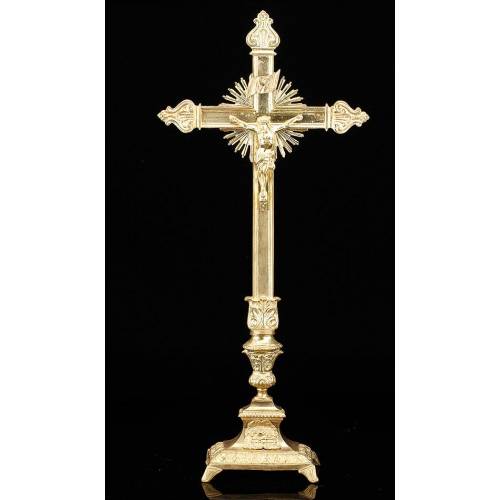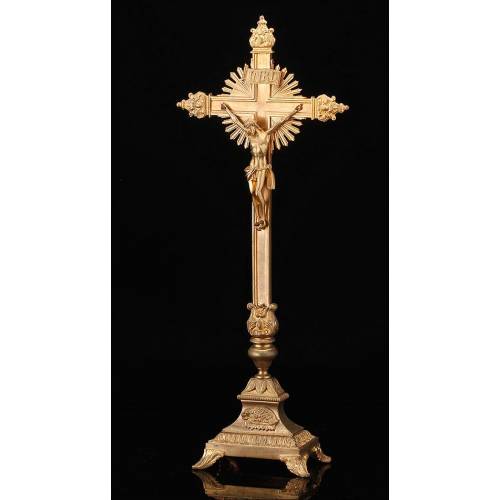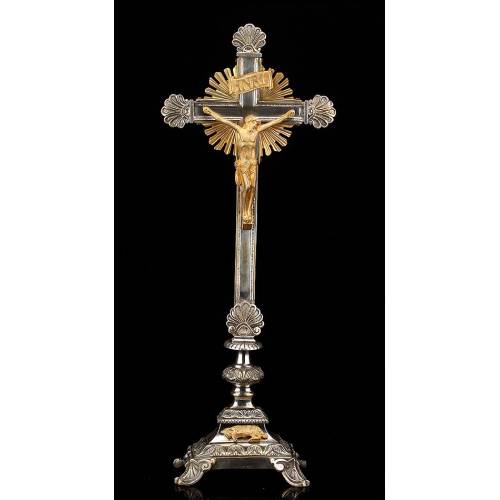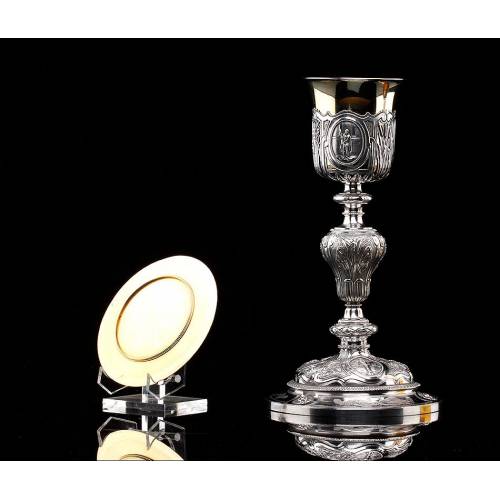D-225
Antique Gold-Plated Silver Chalice. France, 19th Century
Fine gold-plated Neo-Gothic solid-silver chalice with paten. In fine condition and with hallmarks. Made by Armand Caillat.
Sold!
Superb antique gilded silver chalice with paten, made in France in the 19th century by the goldsmith Armand Caillat. Both pieces bear the hallmarks which identify antique French silver and the goldsmith. The chalices foot shows a gorgeous lobed shape, quite like a flowers, very typical of the medieval art which inspires the pieces general design. It is divided in three sections or petals embellished with hand-engraved volutes and symmetrical designs. Close to the edge we can see the French silvers mark and the silversmiths mark. The foot connects the stem through a series of long and stylized leaves engraved directly in the metal surface; over them we can see the main node. At the top of the chalice, the simple and elegant cup stands out. The sub-cup is composed of long leaves, similar to those of the chalices foot. Near the edge we find again the hallmarks the hallmarks already seen at the foot, clearly engraved. The paten which comes with the chalice is a simple solid-silver piece whose only decoration consists of a schematic cross composed of two straight perpendicular lines, engraved by hand. Near the patens edge we can see the hallmarks stated before. This striking antique gilt silver chalice made by Armand Caillat is a real collectors piece, worthy to belong to a museum of sacred art or a cathedrals treasure. Dimensions: Chalice: Foots Width: 5.5 in / 14 cm. Cups Width: 3,75 in / 9.5 cm. Height: 9.17 in / 23.3 cm. Weight: 445 g. Paten: Diameter: 5.12 in / 13 cm. Weight: 66 g. Total Weight: 511 g.Armand Caillat - History Armand Caillat was a renowned French goldsmith who worked during the second half of the 19th century. Originally his name was Thomas-Joseph Armand, but after marrying the daughter of the goldsmith Françoise Caillat he adopted his name, and in 1853 took over the family business. Under his authority, the company grew exponentially and in 1885 it already employed 40 workers. During his first years as a goldsmith, Caillat made many pieces of clear Neo-Gothic inspiration. In 1885 he shows an interest for the symbolist school, and from 1888 to his death he studied the use of new materials such as ivory. In that period, he was the only goldsmith from Lyon whose work was recognized in Paris. He was awarded many national and international prizes and worked for the poles Pius the Ninth and Leon the Thirteenth. Currently, many of his works are part of the treasures and collections of relevant churches and museums, among them the Vatican Museums.

